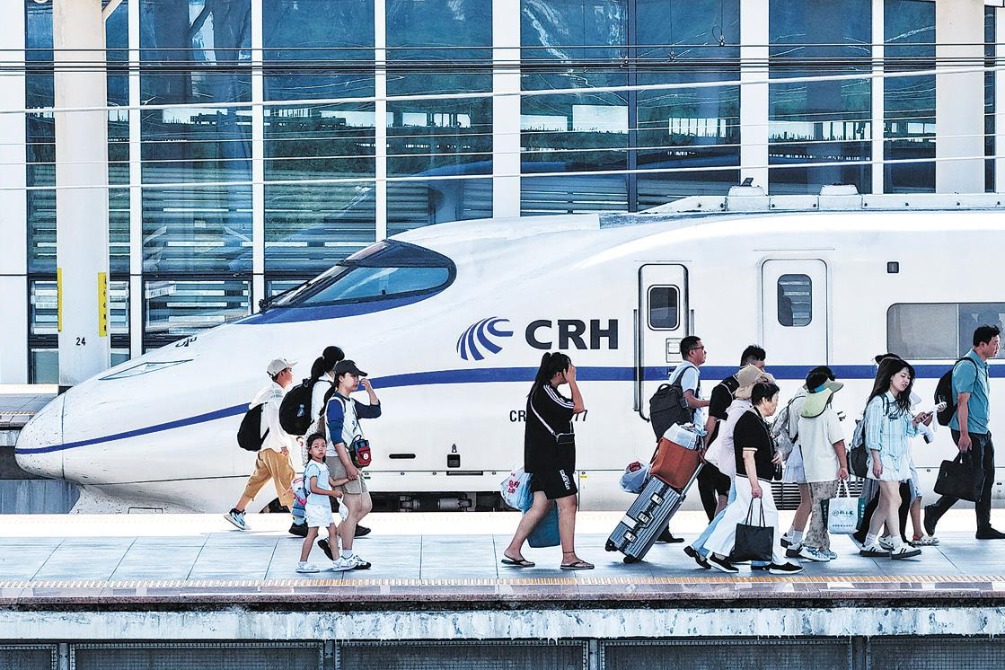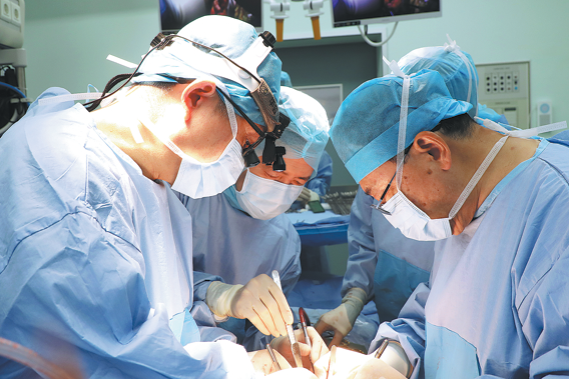Shenzhen, Shanghai take on outbreaks
Nation's two financial hubs making progress in latest flare up of contagion

Production resumed on Friday and people's lives began to get back on track in Shenzhen, Guangdong province, after parts of the city effectively achieved zero new COVID-19 cases, a senior official said.
Huang Qiang, deputy secretary-general of the Shenzhen municipal government, said the city's Yantian and Guangming districts have reported no new cases for several days and Pingshan district, Dapeng New Area and Shenshan Special Cooperation Zone reported zero cases since the Chinese New Year holiday in February.
Under the circumstances, the city announced it would adjust the districts' prevention and control measures to resume work, production and normal social interaction, Huang said at a news conference on Friday.
Departments will also check and investigate the difficulties that local companies face in employment, production, supplies of raw materials, capital and financing to introduce more precise and effective measures meant to help them resume production and ensure the construction of key projects in the city, he said.
Shenzhen has introduced a series of preferential policies to help bail out local businesses and residents experiencing difficulties amid the latest COVID-19 outbreak, including special loans and rent reductions put in place on Thursday.
Still, strict measures will remain in the districts to prevent further outbreaks or spread.
On Monday, parts of the city's businesses and residential communities were closed or sealed off and all public transport suspended operations to help stamp out the latest outbreak.
Shenzhen recorded 69 locally transmitted confirmed cases and 36 asymptomatic cases on Thursday, with most related to quarantined areas and key groups, said the provincial health commission on Friday.
Dongguan, a nearby industrial city, eased restrictions after it logged just four new local cases and 25 asymptomatic cases on Thursday.
The city began to resume public transport on Friday, including running buses and subways, according to a statement from the city's health authorities on Friday.
Meanwhile, Shanghai on Friday began free testing in areas deemed to have low risk of COVID-19 exposure to identify potential infections, according to the municipal health authorities. The free testing will last till Sunday.
But a closed-loop management system will not be imposed in these areas, Wu Jinglei, director of the Shanghai Municipal Health Commission, said at a briefing on Friday.
"The number of infections on Thursday is relatively higher than those announced in the past few days, because most of the patients were identified through testing carried out in key neighborhoods across the city over the past two days," Wu said.
To curb the spread of the virus in the city, the Shanghai Civil Affairs Bureau on Friday advised residents to stagger their visits to cemeteries and mausoleums during the Tomb Sweeping Day holiday from April 3 to 5 to minimize the risk of exposure to COVID-19.
Tomb Sweeping Day, during which Chinese pay respect to their ancestors by visiting their graves, falls on April 5 this year.
According to Zeng Qun, deputy head of the bureau, individuals who prefer to visit the graves in person on peak days, which are March 26 and 27 as well as April 2 to 5, will have to schedule an appointment with the cemeteries via official WeChat platforms.
Today's Top News
- China bids to cement Cambodian-Thai truce
- Fiscal policy for 2026 to be more proactive
- Revised law to spur high-level opening-up
- High-speed rail mirror of China's modernization
- China will deliver humanitarian aid to Cambodia
- The US 2025: a year of deep division






























